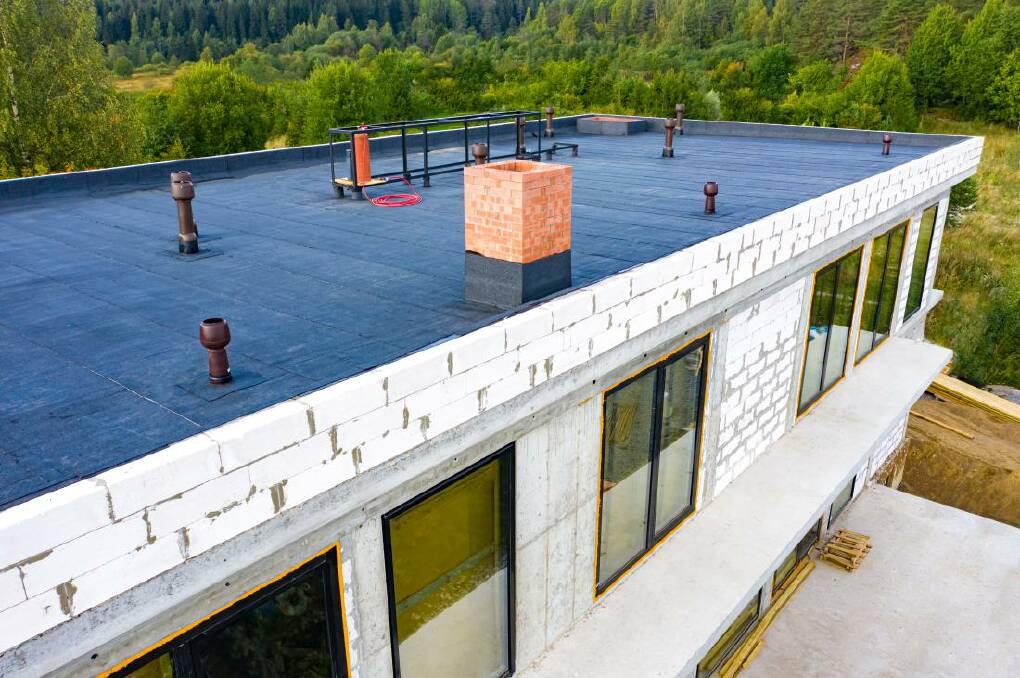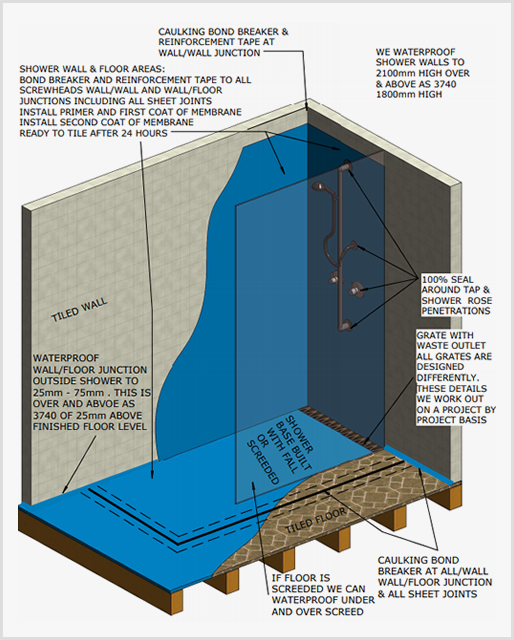An Unbiased View of Waterproofing Auckland
9 Simple Techniques For Waterproofing Auckland
Table of ContentsAbout Waterproofing AucklandAll About Waterproofing AucklandThe smart Trick of Waterproofing Auckland That Nobody is Talking AboutUnknown Facts About Waterproofing AucklandSee This Report about Waterproofing AucklandA Biased View of Waterproofing Auckland
Waterproofing buildings is the technique of forming a barrier over surfaces of foundations, roofings, wall surfaces and also other architectural members of structures to protect against water penetrations with these surface areas. In summary, building surfaces are made waterproof as well as water-proof. Study has shown that waterproofing just makes up 1% of a structure's building and construction expenses yet when overlooked, it can be in charge of practically 90% of the damages.
Consequently, you require to ensure that you get the appropriate sorts of waterproofing products for your special needs. To assist you in the selection procedure, below are the 5 kinds of waterproofing in building: Cementitious waterproofing items are thought about as the easiest waterproofing products to make use of. These are easily offered from suppliers of masonry items like, and they're easy to blend and also apply.
Polyurethane fluid membrane layer approach of waterproofing is normally used for the flat roof location as well as subjected to weathering. This kind of waterproofing material is extremely conscious dampness web content present. Consequently, before application, it is vital to be added careful in reviewing the moisture material of the concrete slab, otherwise peeling off or de-bonding of membranes may happen after time.
It uses much more versatility than the cementitious kinds of waterproofing. At the end of the day, there are numerous distinct kinds of waterproofing products on the market. Some are extra effective than others. With this in mind, it is essential to understand that not all of them are equivalent. As a result, you need to take a while to discover out which one is going to function best for your individualistic project needs.
An Unbiased View of Waterproofing Auckland
Just how does cellar waterproofing job? Inside basement waterproofing works by attending to water seepage where it materializes itself inside. After thoroughly analyzing any leak-prone internal areas, employees develop a trench in the cellar flooring that runs alongside the affected location. They put a water drainage system in this trench, guiding water away from the cellar inside, as well as secure the trench with concrete to bring back the appearance of the original structure floor.

Exterior basement waterproofing strategies relieve this stress by redirecting water right into a gravel-covered ground drain, which carries it far from the residence. While both techniques of basement waterproofing job well, they take care of the issue in different means. Inside basement waterproofing remains a preferred alternative because of its relatively small cost factor, while outside basement waterproofing helps homeowners that choose to avoid interior building work.
Get in touch with us today to find out more concerning the basement waterproofing job we conduct for Georgia home owners.
Waterproofing Auckland for Dummies
It is necessary to waterproof your residence. Interior areas of our home need to be kept dry from roofing to cellar. Waterproofing your home prior to construction will prevent these troubles. If you water-proof go to this web-site your home, it will avoid damage later. monsoon infiltration. Such troubles will certainly call for a professional and also some basic knowledge regarding the issue and also services to it.
y. It helps in reducing humidity inside your home as well as thus safeguards things inside your home from damage triggered due to humidity or water direct exposure. It is also essential for the veracity of the building. Relying on the degree of water damages or proprietor preference, waterproofing systems can be installed indoors or outdoors.
The poly acrylic chemical option is prepared which is used to secure the breakage or leak on the wall surface and balcony which will be a solid water-proof base as well as shield and also maintain the stamina of any framework. This is done by an extremely educated specialist group. You need to make certain that top quality products are made use of for the procedure.
The last step is to place 2 layers of poly acrylic chemical with white cement externally. is optimal for structures and structures that are already having leak or damage along with for brand-new frameworks to avoid leakage in future. This procedure helps in keeping the life as well as top quality of the building as well as ensures that there is no damage to the structure because of Recommended Site the rainfalls.
The Of Waterproofing Auckland

Apply a thick cement slurry concrete the surface of the slab. Over this layer, apply a completing coat with concrete sand mortar 1:4 and water-proofing compound as per the layout.
Make a side between the parapet and the sloping slab on the 2nd day. Cure this waterproofing for fifteen days, with damp gunny bags spread out over it.
Top Guidelines Of Waterproofing Auckland
Maintain the break joint pattern while dealing with the Shahabad ceramic tiles for the base. After repairing the Shahabad floor tiles, grout the joints with cement slurry completely. Seal the joints in between the Shahabad floor tiles with the assistance of C.M.
For the basement, cellar provision of arrangement and sump and also made in P.C.C. itself and Shahabad base is also prepared in the same fashionVery same
Facts About Waterproofing Auckland Uncovered
filled up with concrete slurry and also say goodbye to slurry is taken in. Heal it for a minimum of seven days, a minimum of 10 times a day. After healing, offer her explanation the final jointless water-proof plaster coat in C.M. 1:4 over the rough Shahabad. The entire procedure stated above forms a box around the structure and also does not allow any type of water to permeate through or leak from the cellar.